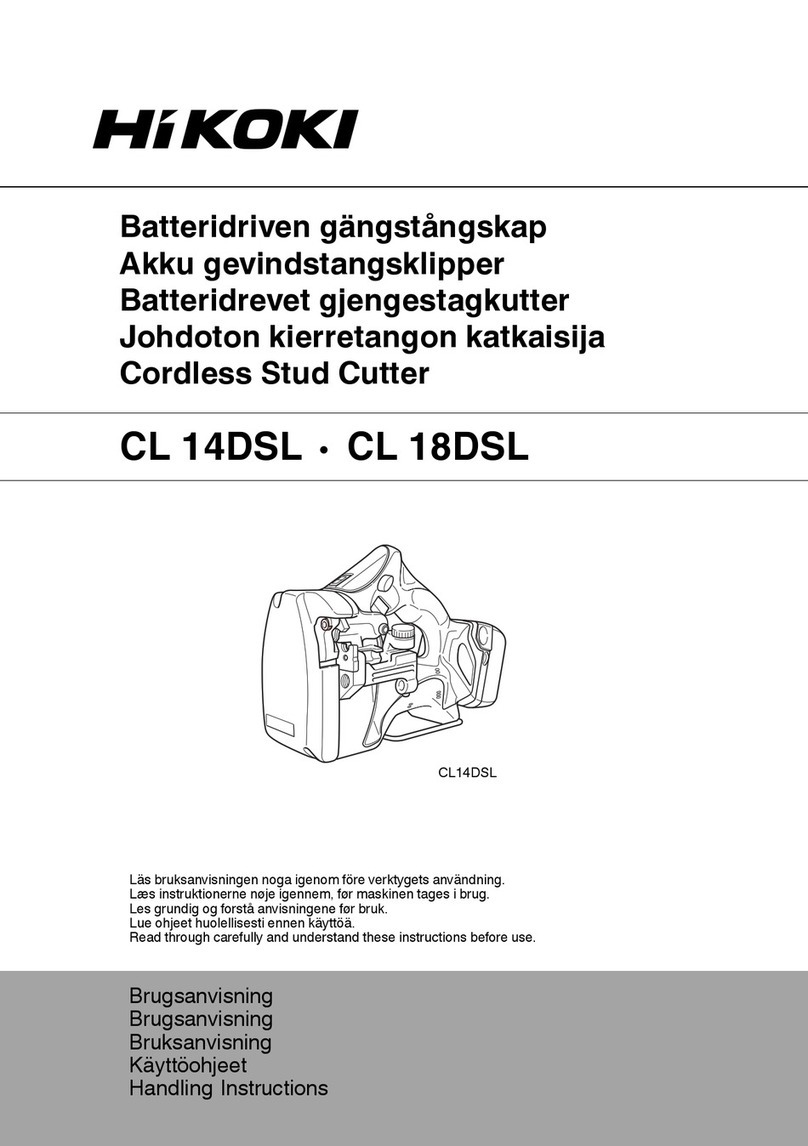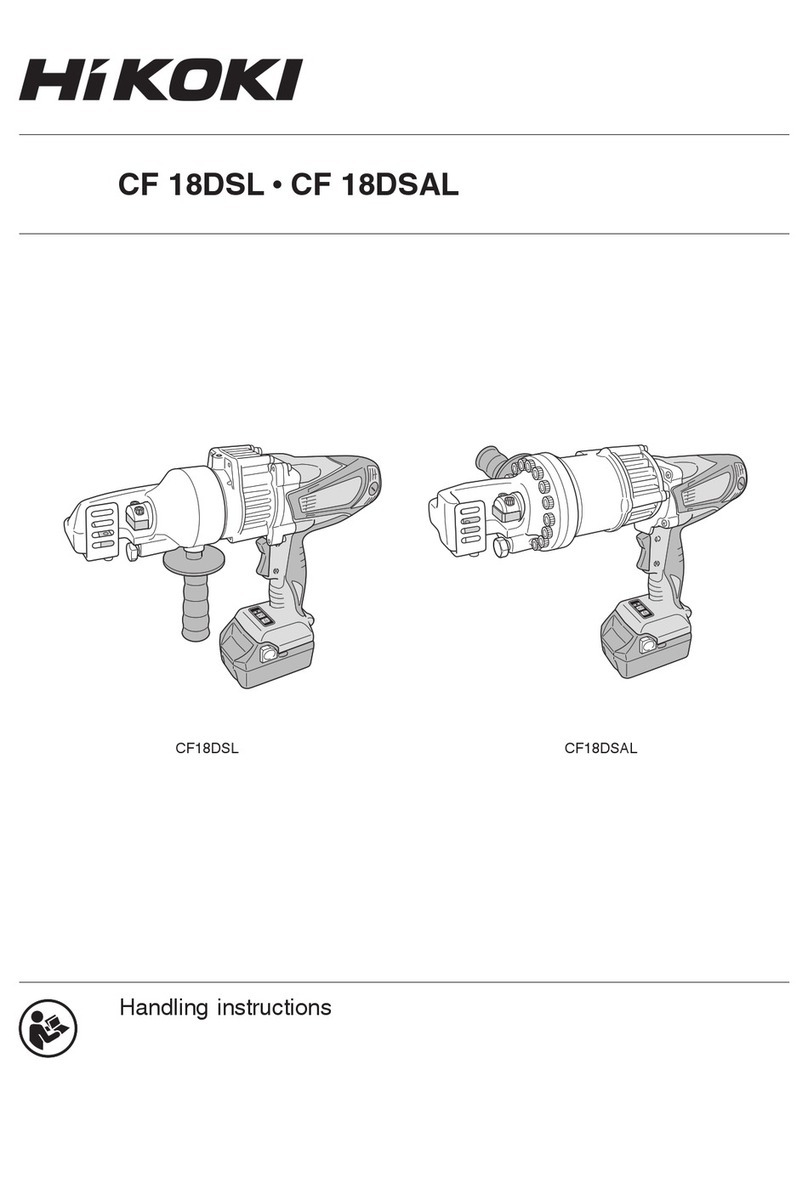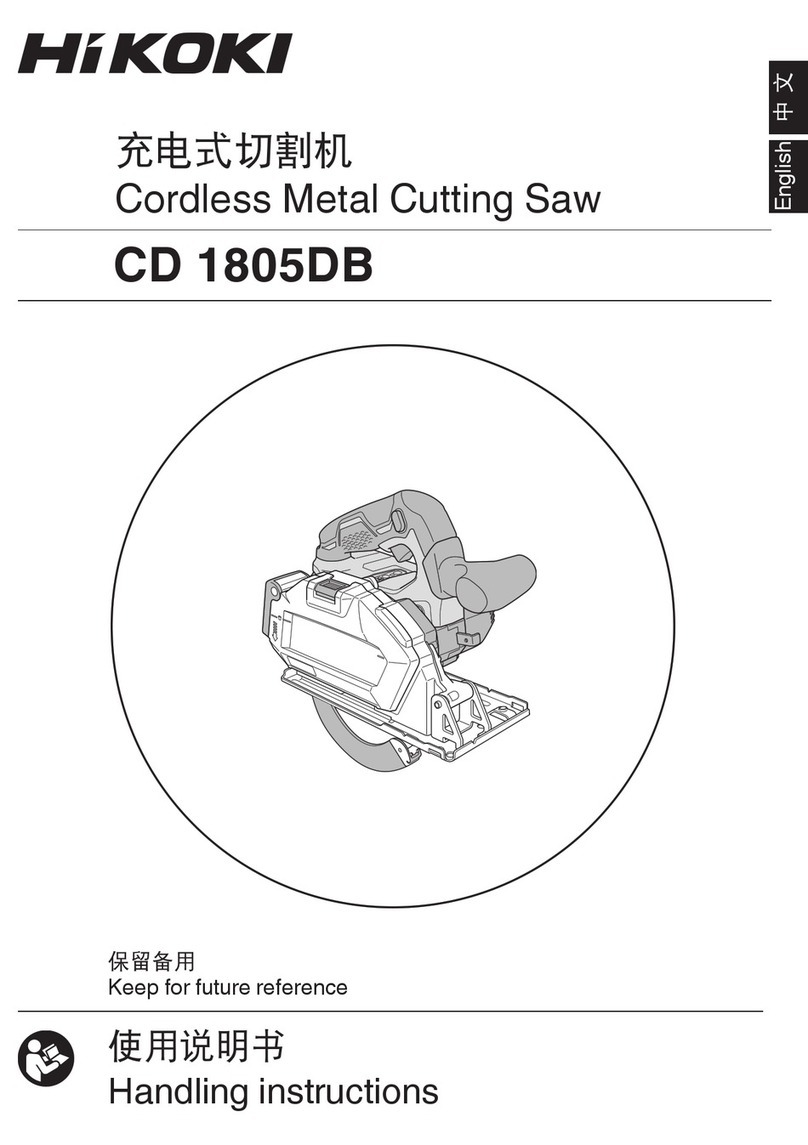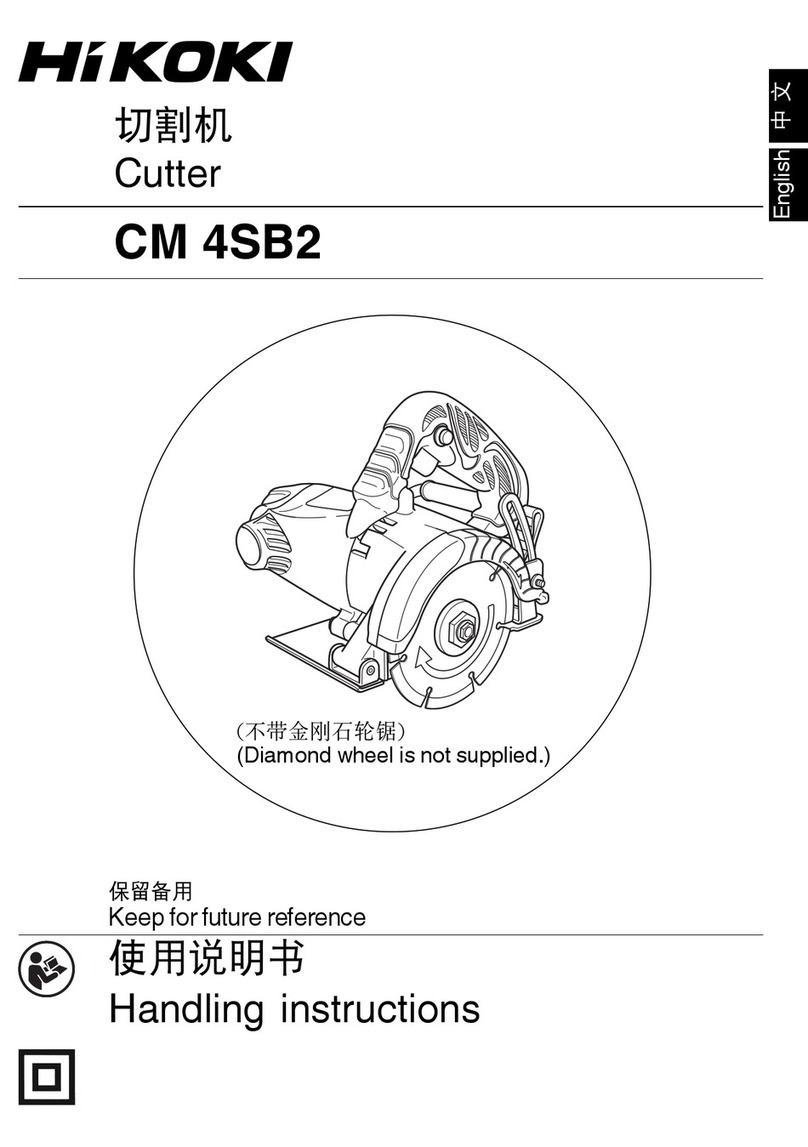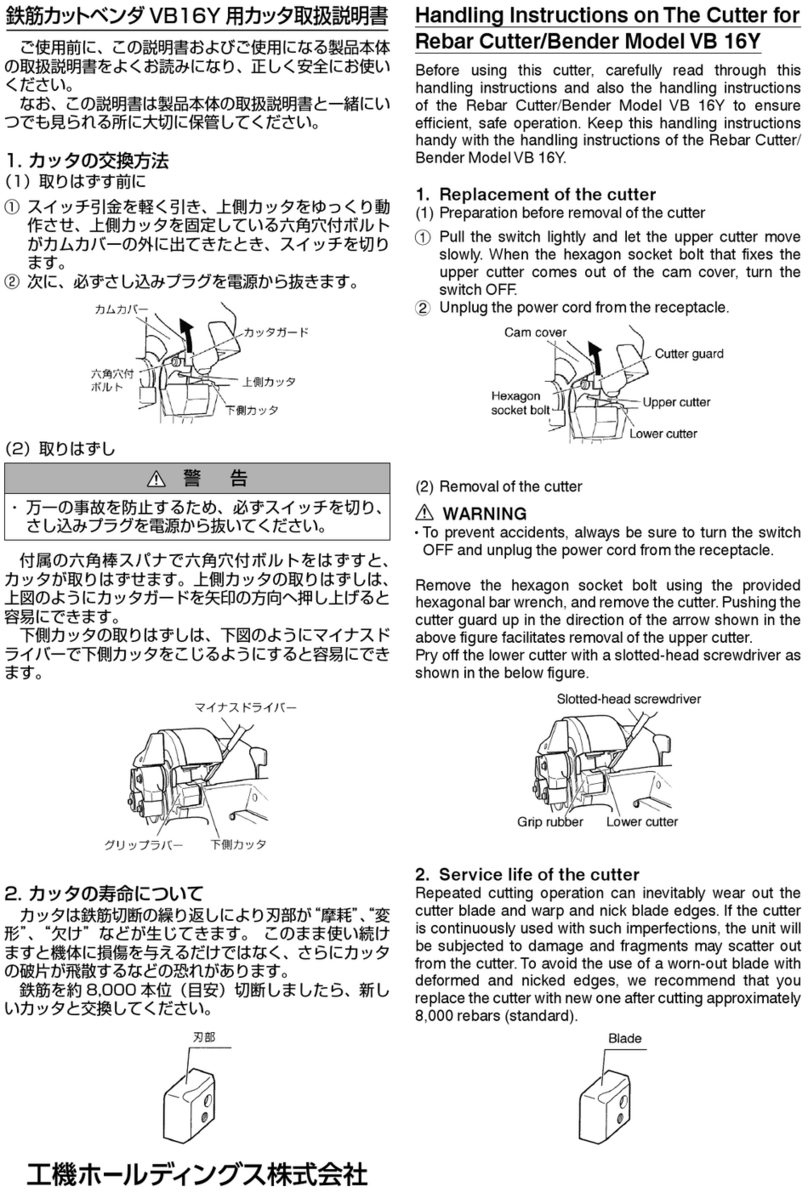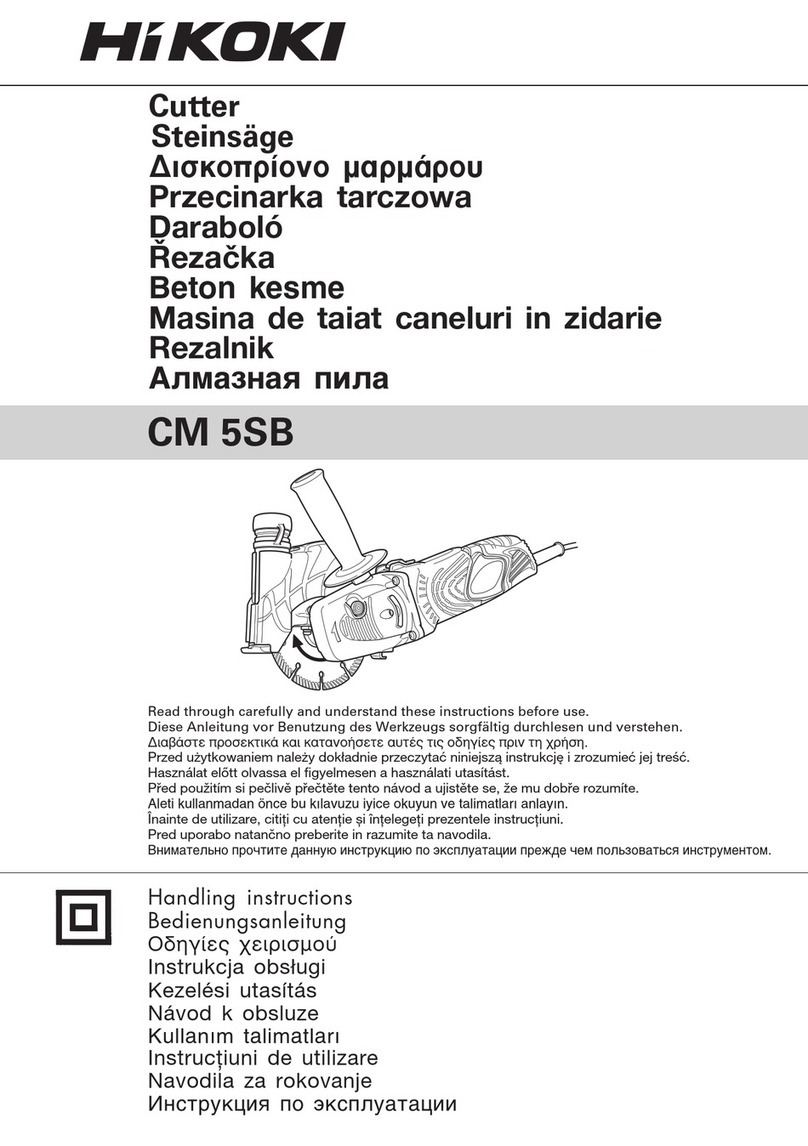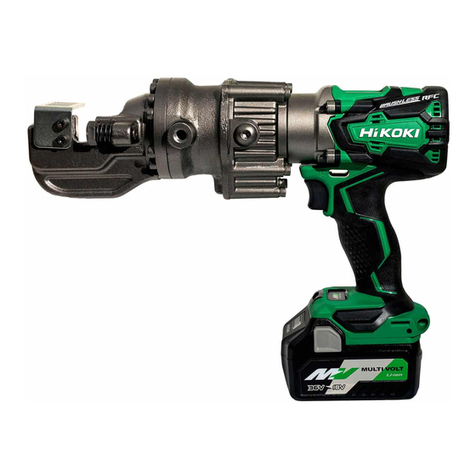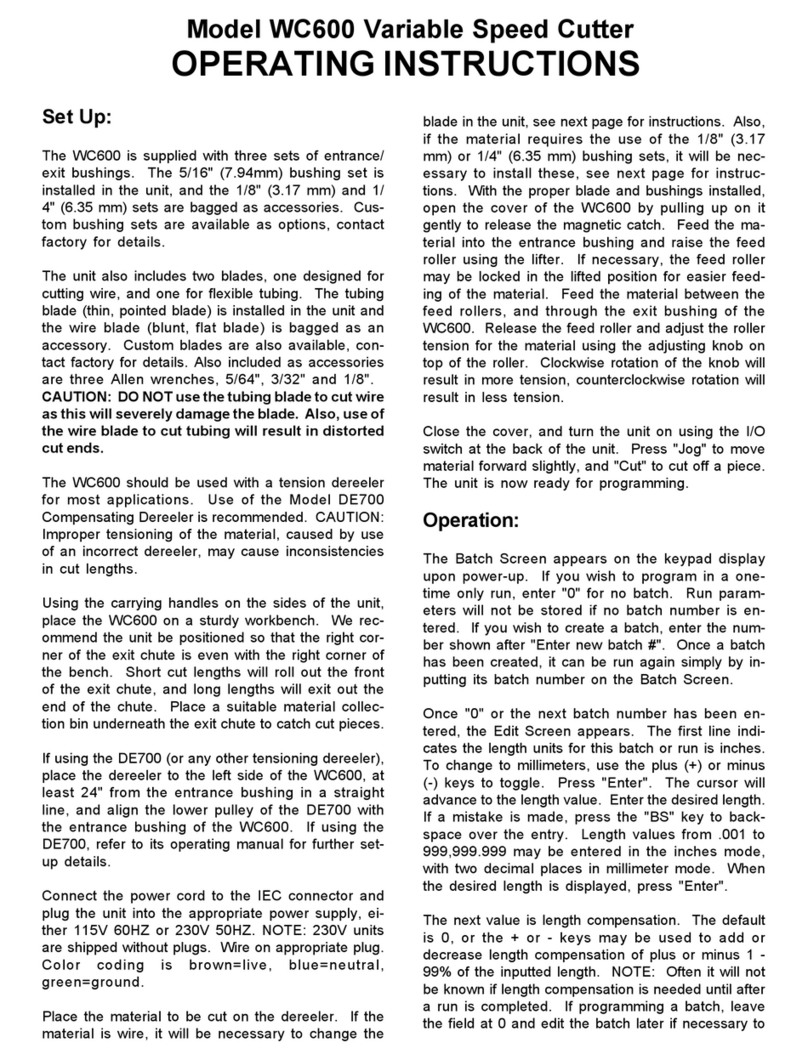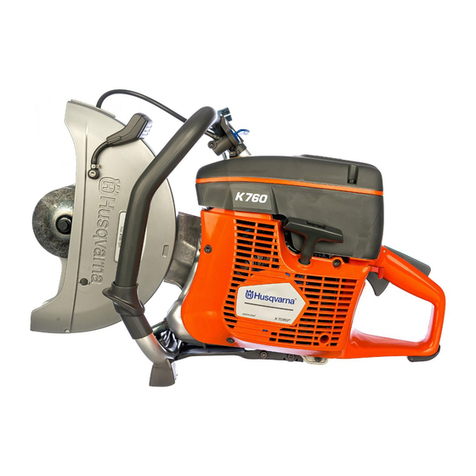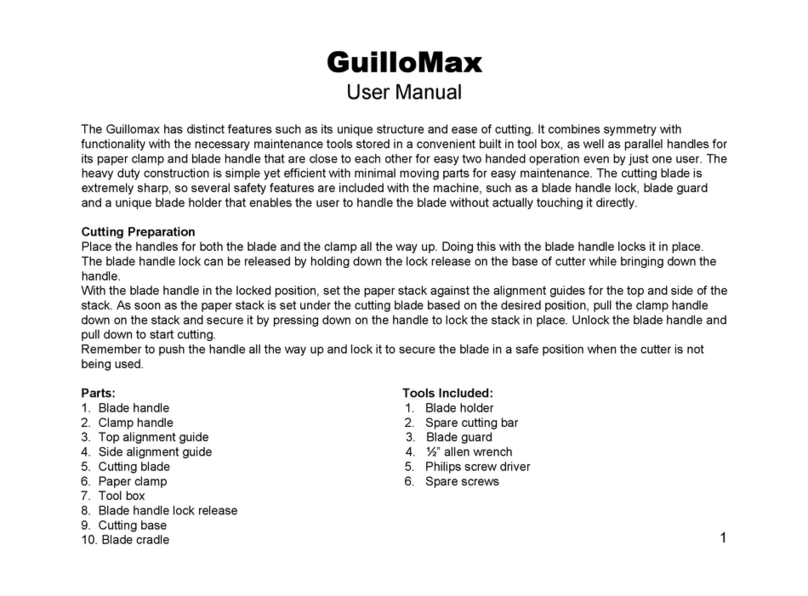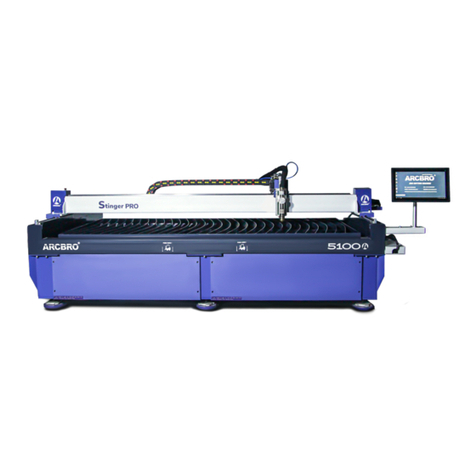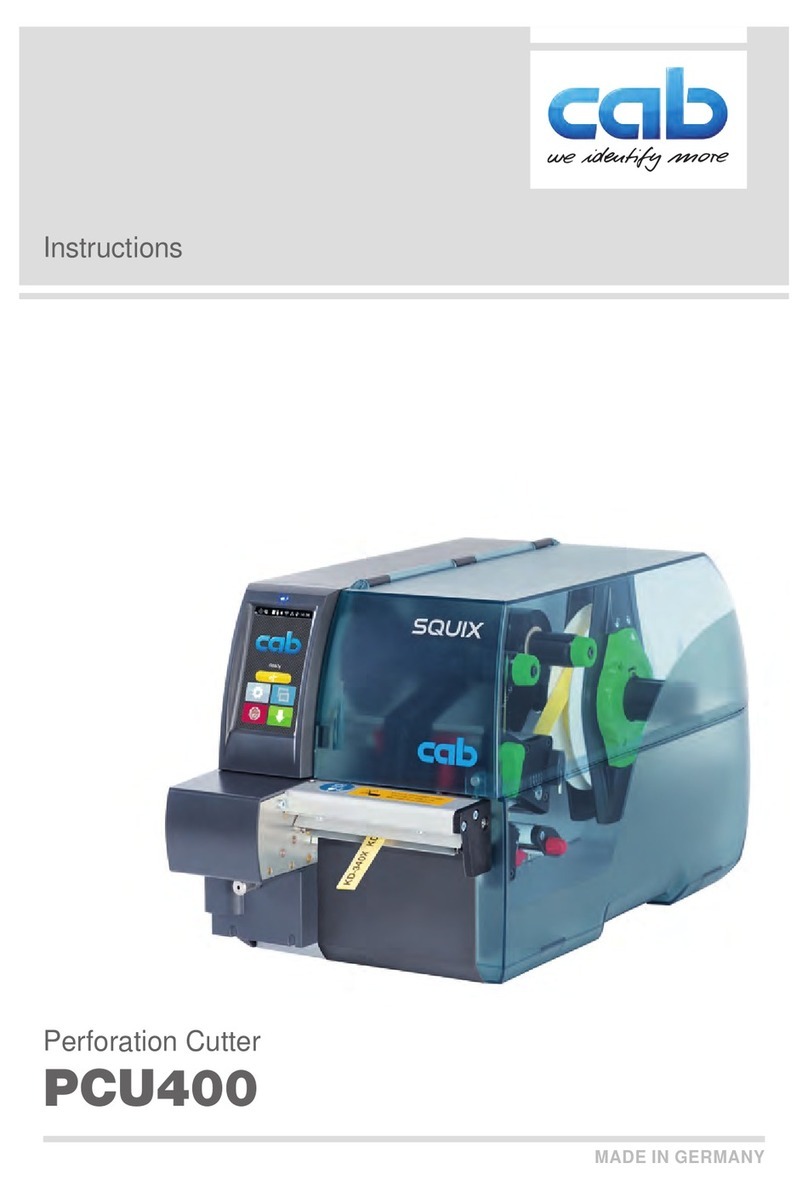
10
English
f) Keep cutting tools sharp and clean.
Properly maintained cutting tools with sharp cutting
edges are less likely to bind and are easier to
control.
g) Use the power tool, accessories and tool bits
etc. in accordance with these instructions,
taking into account the working conditions and
the work to be performed.
Use of the power tool for operations different from
those intended could result in a hazardous situation.
h) Keep handles and grasping surfaces dry, clean
and free from oil and grease.
Slippery handles and grasping surfaces do not
allow for safe handling and control of the tool in
unexpected situations.
5) Battery tool use and care
a) Recharge only with the charger specified by
the manufacturer.
A charger that is suitable for one type of battery
pack may create a risk of fire when used with
another battery pack.
b) Use power tools only with specifically
designated battery packs.
Use of any other battery packs may create a risk of
injury and fire.
c) When battery pack is not in use, keep it away
from other metal objects, like paper clips,
coins, keys, nails, screws or other small metal
objects, that can make a connection from one
terminal to another.
Shorting the battery terminals together may cause
burns or a fire.
d) Under abusive conditions, liquid may be
ejected from the battery; avoid contact. If
contact accidentally occurs, flush with water. If
liquid contacts eyes, additionally seek medical
help.
Liquid ejected from the battery may cause irritation
or burns.
e) Do not use a battery pack or tool that is
damaged or modified.
Damaged or modified batteries may exhibit
unpredictable behaviour resulting in fire, explosion
or risk of injury.
f) Do not expose a battery pack or tool to fire or
excessive temperature.
Exposure to fire or temperature above 130°C may
cause explosion.
g) Follow all charging instructions and do not
charge the battery pack or tool outside the
temperature range specified in the instructions.
Charging improperly or at temperatures outside
the specified range may damage the battery and
increase the risk of fire.
6) Service
a) Have your power tool serviced by a qualified
repair person using only identical replacement
parts.
This will ensure that the safety of the power tool is
maintained.
b) Never service damaged battery packs.
Service of battery packs should only be performed
by the manufacturer or authorized service providers.
PRECAUTION
Keep children and infirm persons away.
When not in use, tools should be stored out of reach
of children and infirm persons.
PRECAUTIONS FOR CORDLESS STUD
CUTTER
1. Never bring the cutter near your fingers when operating
the switch.
2. Do not use for cutting screws other than soft steel studs.
This tool is designed especially for cutting of soft steel
studs. Using this tool for brass or stainless steel screws
could cause distortions in the screw threads, thereby
preventing insertion of nuts.
Never use to cut tempered bolts, screws of differing
sizes, reinforcing rods, etc.
3. Use by changing the special cutters according to the
size of the studs. Cutting with cutters of the wrong size
could damage to the continuous thread studs or the
cutter edges.
4. Make sure that the threads on the studs and those on
the cutter are correctly meshed before starting to cut.
Cutting when the threads are not meshed could cause
damage to the studs and the cutter.
5. If the cutter has been attached in the wrong direction or
the bolt for cutter attachment is loose, this could cause
damage to the cutter edge and could lead to premature
damage to the main unit.
Be very careful to attach the cutter correctly.
6. Cutting studs at short lengths of 10 millimeters or less
will create an insufficient meshing length between the
cutter and studs, thus causing damage to the cutter.
Always cut at lengths of more than 10 millimeters.
7. When cutting studs secured to narrow locations, be
sure that there is at least 8 millimeters between the stud
and the surrounding materials.
If the distance is less than 8 millimeters the cutter could
contact the surrounding materials, thereby causing
damage to the cutter and the main unit.
8. When inspecting, cleaning or replacing the cutter, be
sure to remove the battery from the main unit. The
switch could be turned on accidentally, thereby causing
accidents.
9. When using this equipment at heights, make doubly
sure prior to use that there is no one standing in the
area immediately below you. Place the tool in a safe and
stable place when not using at the moment.
10. Always charge the battery at a temperature of 0 – 40°C.
A temperature of less than 0°C will result in over charging
which is dangerous. The battery cannot be charged
at a temperature greater than 40°C. The most suitable
temperature for charging is that of 20 – 25°C.
11. Do not use the charger continuously.
When one charging is completed, leave the charger for
about 15 minutes before the next charging of battery.
12. Do not allow foreign matter to enter the hole for
connecting the rechargeable battery.
13. Never disassemble the rechargeable battery and
charger.
14. Never short-circuit the rechargeable battery. Short-
circuiting the battery will cause a great electric current
and overheat. It results in burn or damage to the battery.
15. Do not dispose of the battery in fire.
If the battery is burnt, it may explode.
000BookCL14DSLEE.indb10000BookCL14DSLEE.indb10 2019/08/3011:39:502019/08/3011:39:50
